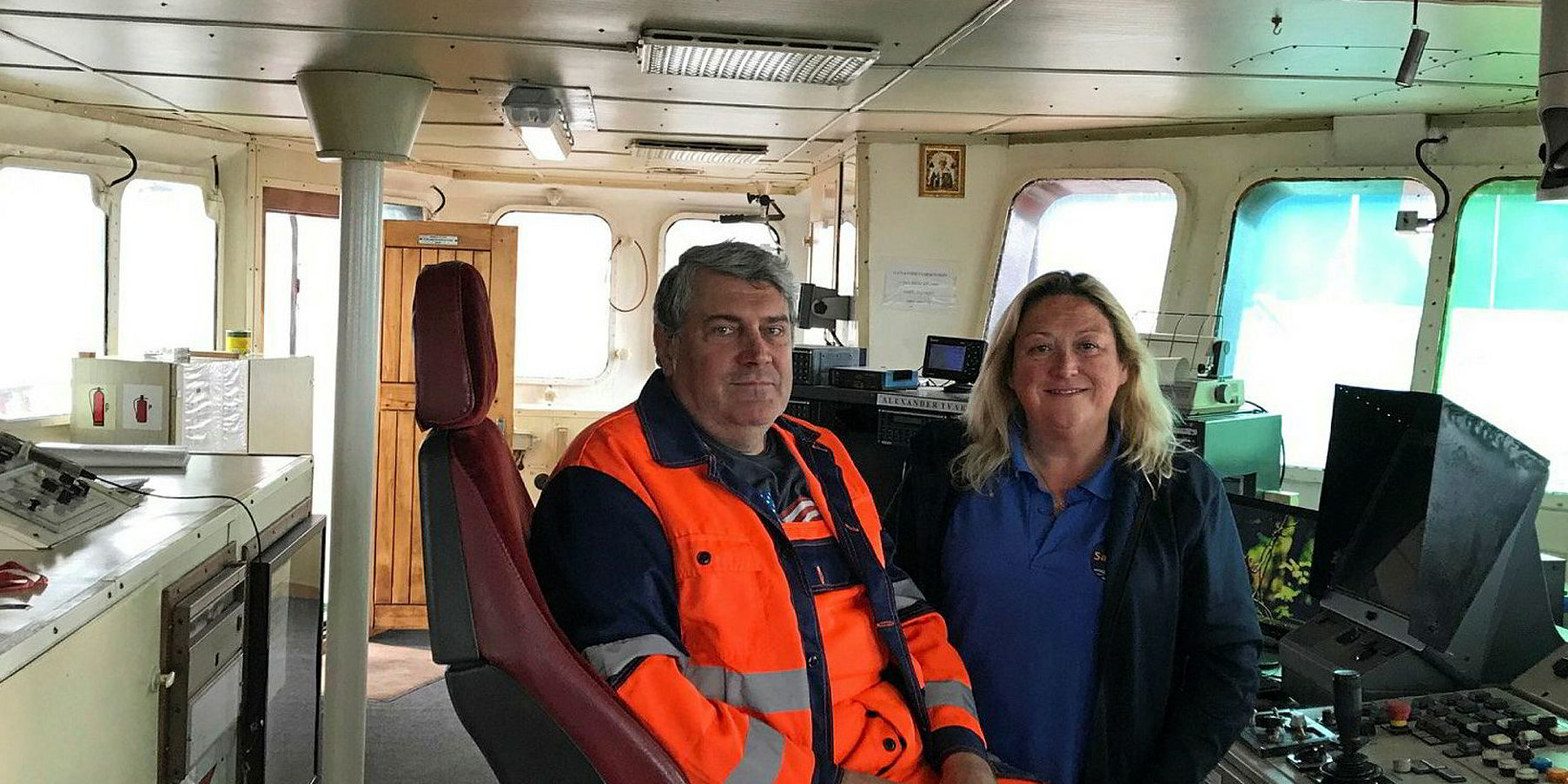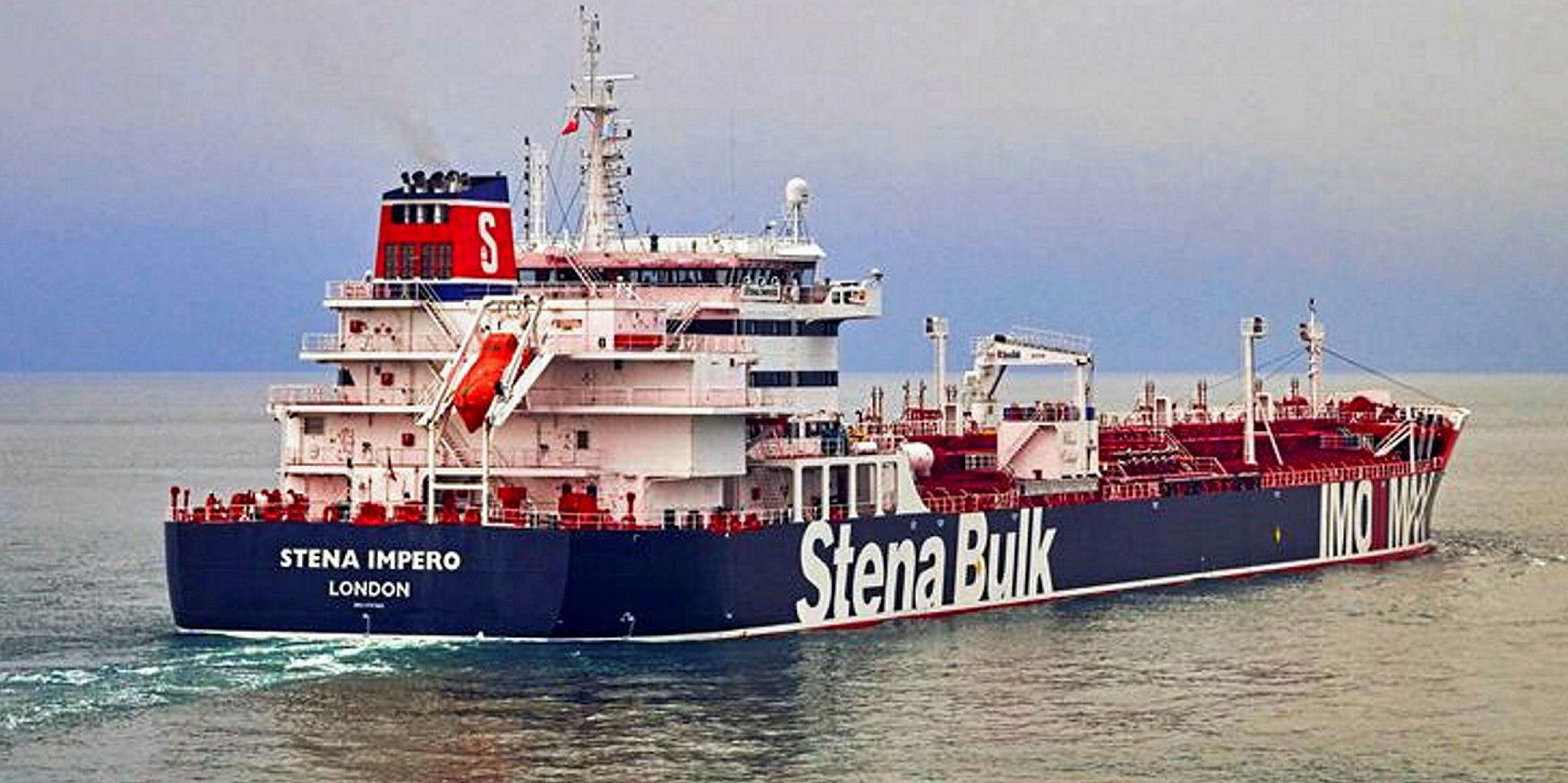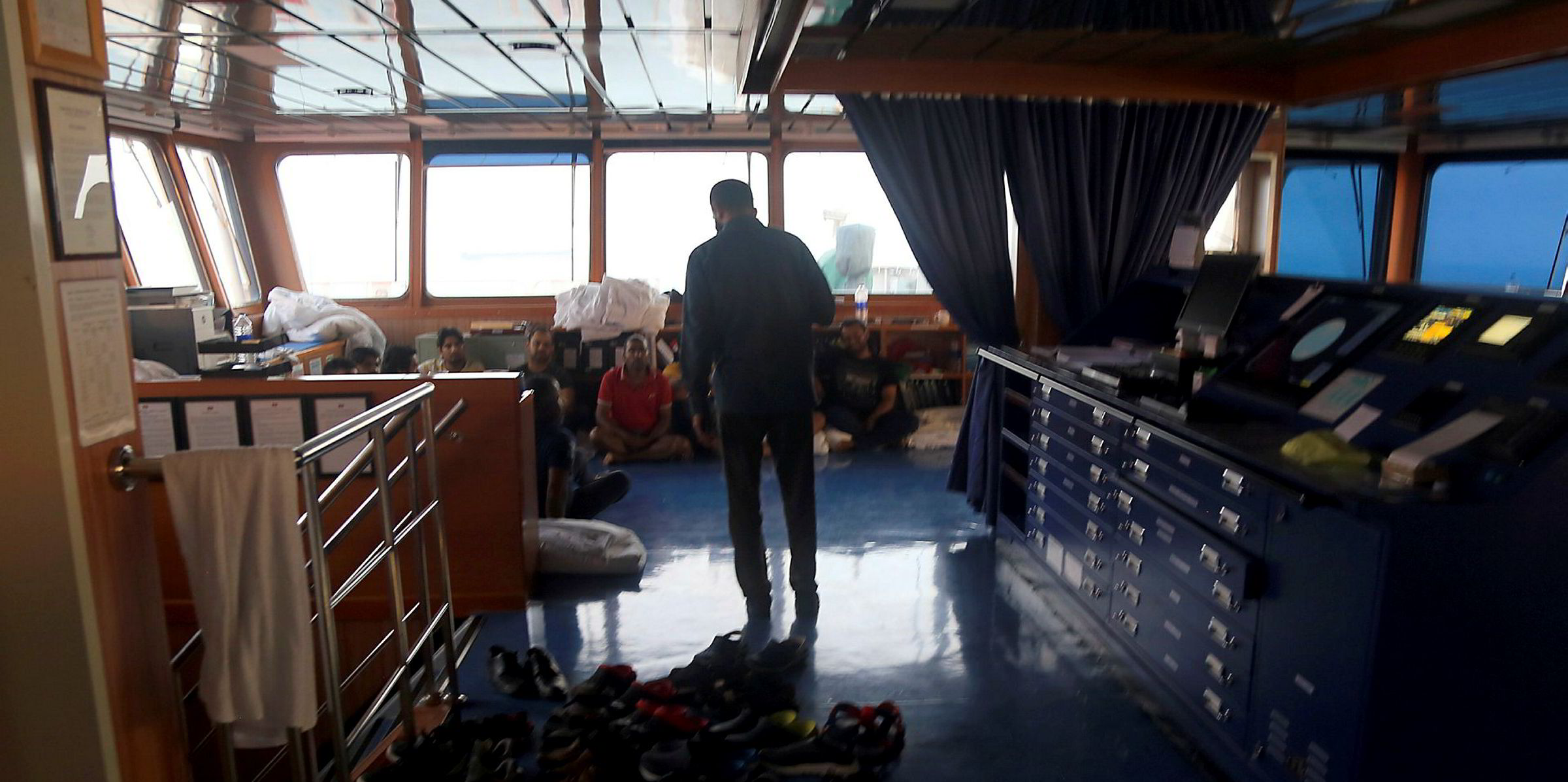Thankfully the multi-national crew being held on the 50,000-dwt tanker Stena Impero (built 2018) are all safe after it was dramatically seized by the Iran’s Revolutionary Gard off the Strait of Hormuz Friday last week.
Shipowner Stena Bulk has now confirmed they are in good health. However, it was hard to miss the anxiety and worry that was etched on the faces of the 23 men in photographs that later emerged of the crew huddled on the floor of the bridge under the watchful eye of Iranian armed guards.
It is difficult to imagine the severe stress they, and their families back home, must be under when they do not know what their fate will eventually be or how long they will be held.
They now find themselves held hostage by a country with an abysmal human rights record to be used as pawns in the ongoing political games between Tehran and the West.
Their feelings of anxiety will be shared by the thousands of seafarers which are now operating around, or heading toward, the Strait of Hormuz.
The advice from the UK government is for ships under its flag to avoid the region. But others will have little choice but to trade there.
It is a situation that is becoming reminiscent of piracy crisis off coast of Somalia in 2008 where seafarers trading in the region were working under the constant fear that they might be the next to be violently hijacked and taken hostage.
Those operating in the Middle East Gulf do not only face the threat of hijacking. As we have previously seen there is perhaps more likelihood of a rocket or torpedo attack on non UK ships which could prove catastrophic for a tanker carrying clean products.
That is why the maritime unions are calling for a meeting of the UK Warlike Operations Area Committee (WOAC) to consider designating the region a high risk area.

The WOAC is made up of officers' Union Nautilus International and the UK Chamber of Shipping but their decision could have implications far beyond UK flag ships.
Just as happened in 2008 such a designation could eventually earn all seafarers with recognised national and international collective bargaining agreements are paid a bonus whenever they enter the high risk region.
To put it crudely the extra payout is, in effect, danger money. But who would begrudge crew additional wages for working under such stressful conditions.
After all shipowners are already paying out higher insurance and operational costs and missing trade opportunities in the region. Why should seafarers be last to receive an extra payout from their employers when they are first in the firing line of the ongoing troubles.
Far away from the Middle East in the small port town of Leith in Scotland nine seafarers were facing with similar feelings of uncertainty, abandonment and isolation.
The 3,000-dwt Alexander Tvardovskiy (built 1996) was detained at the Edinburgh port for Maritime Labour Convention deficiencies including failure to pay wages.
The crew were stuck onboard with the ship’s master Gennadi Kukvinoff declaring: “We have no idea when we can go home.”
At least the men had local port chaplain Pauline Robertson, who represented the Sailor’s Society, to come to their aid.
She said that, with the help of the local community, she could provide food and help for the men whist they waited for owner’s provisions to arrive. But it was the uncertainty of when the men would be paid and allowed to go home that was causing them the most stress and anxiety she said.
“They’re anxious and worried about how long they will be there,” Robertson told TradeWinds.
“The crew is not good not good at all. Some want to go home,” she said.
“The most important thing is to make sure that they could have contact with their family.”
Thankfully the situation is coming to a resolution. The problems of the Alexander Tvardovskiy are more common in shipping than the more extreme situation onboard the Stena Impero.
But both cases raise the question of whether the shipping industry is providing adequate protection for its crews?








